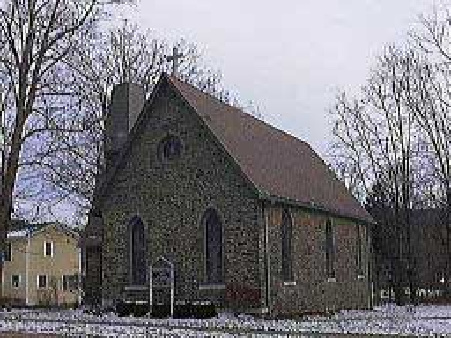Architecture of a Church can be as settling to the eye of a believer or seeker as the Gospel is to the ear or the Sacraments to the soul, the problem is that most churches abandoned traditional architecture about the same time as the "liturgical reforms" and "post-modern theology".
Now for those of you in the UK and Europe, you have not encountered the problem of new architectural models in your churches for several reasons.
Here in the United States we suffer from rampant commercialism and "newness" syndrome that keeps us building new, cookie-cutter, turn-key box buildings that look more like the local mall or shopping plaza, library or medical building and less like a church. This is due, in part to the rise of the non-denominational mega-church that will want you to feel that warm fuzzy feeling of the mall and none of the fuss of traditional religion.
On the other hand you have those churches that were built in the 1950's, 1960's and 1970's when the architects were trying too hard to look futuristic or dropping mind-altering drugs or into that really bad Brady Bunch suburbia split level multipeaked multisurfaced avocado green and mustard yellow tripe.
There are those who say that it is not the building but what is inside that makes the difference, and this is true to a point, but there needs to be a difference in the style of building from where we live to where we work to where we shop to where we worship. If you are a delivery driver or a taxi driver or a police officer, you wouldn't want to drive and own the same type of vehicle you work with all day, would you? If you are a dentist or chiropractor or a nurse you wouldn't want your home to look like the medical office building where you work, would you? Why then would you want your church to look the same as where you buy your lumber or groceries?
In keeping with my policy of minimizing the negative and accentuating the positive, I now present you with, in what is in my opinion, inviting, comfortable and seeker friendly church architecture.
Reference and Resources:
http://ohioanglican.blogspot.com/2007/03/this-is-unreal.html
http://images.google.com/images?hl=en&rlz=1T4GZHZ_enUS227US227&um=1&q=modern+church+architecture&sa=N&start=0&ndsp=20 http://www.lifeway.com/lwc/article_main_page/0,1703,A=167438&M=200906,00.html
http://www.theckn.com/uploads/THY_SPACE-article.pdf
http://www.cune.edu/resources/docs/Issues/fall2006/5article1.pdf





2 comments:
The sad trend of the abandonment of traditional church architecture cuts across all denominations. The Presbyterian Church up the Road from me was a classic northern meeting house style with a simple, beautiful steeple that could have come out of a Rockwell painting.Sadly they cut down the two oak trees in the front lawn, added a drive through entrance, and replaced the old steeple with a small cartoonish vinyl one that is out of scale. The Roman Catholic Church in a nearby town walked away from a beautiful Romanesque stone church in town (Later bought by an Evangelical Free Church) and built a huge really ugly structure that could be a high class horse barn or casino, now located in what passes for the suburbs in Grove City Pa. I heard the new church roof was leaking after one year, and the slate on the old church is still shedding water.
Yes, slate roofs, you can't beat them for durability and water resistance.
In my area the ugliest Churches were built during the 1960's and 1970's with every denomination being a participant or purchasing one of those buildings in recent years.
I feel like taking camera in hand and doing comparisons of church buildings in my area.
Post a Comment